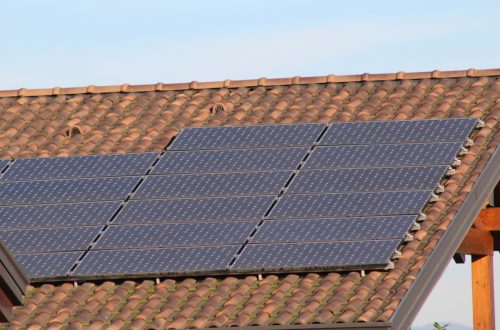High Tech Green Windows

Using traditional glass in construction often leads to increased energy expenses due to its tendency to raise the temperature due to sunlight passing through during summer. This excess heat often necessitates the use of air conditioning to cool buildings, making them financially unfeasible. However, the innovation of green windows or smart windows has introduced an efficient solution to this issue.
How Do Smart Windows Work?
Green windows significantly cut energy costs by selectively absorbing heat, allowing it only when required and preventing it from entering when unnecessary.
These windows are equipped with a chemically composed film covering the glass, endowed with properties that enable electrical conduction. Through a controlling device, the particles within the film can be instructed to either block sunlight by clustering randomly or absorb it by aligning themselves. This transformative process is accompanied by a change in the film’s color.
Saving Energy
The Environmental Protection Agency (EPA) highlights that heating and cooling expenses account for over 40% of energy budgets in typical households. Moreover, approximately 18% of the energy produced in the United States is consumed by office buildings, with some of that energy lost. This loss primarily stems from conventional windows’ inability to repel excess heat in summer and retain warmth in winter.
The integration of green windows holds the potential to drastically reduce these energy losses.
Saving Money
The advent of smart windows brings forth the simplicity of regulating and filtering incoming light with just a turn of a knob. Smart windows have the potential to reduce a building’s energy needs by about 20%, thus saving on electricity bills by an equivalent percentage.
Saving the Environment
The widespread adoption of smart windows holds promise for more than just reducing energy consumption in households and businesses—it also stands as a boon for the environment. As these windows curtail power usage, they correspondingly diminish the carbon footprint of these establishments.
Added Privacy
Beyond the evident advantages in cost-saving and environmental conservation, smart windows revolutionize privacy in ways previously unimaginable. In the era preceding smart windows, blinds reigned as the sole means to prevent outsiders from peering in. However, drawing the blinds meant sacrificing natural light, leading to reliance on electric lighting.
Enter smart windows: these innovations enable precise control over the amount of light blocked, offering the ability to prevent external visibility while allowing ample natural light inside. With various tint settings, these windows can create a “one-way” glass effect—permitting occupants to see outside while preventing outsiders from looking in.
Conclusion
Smart window technology appears to present no discernible downsides. Their capacity to save money, contribute to environmental well-being, and augment privacy in any space makes them an attractive proposition for both residential and commercial use. Consequently, these green windows are increasingly finding their way into the architectural designs of new office buildings, as businesses seek more efficient methods to trim expenses.
Would you like to receive similar articles by email?




